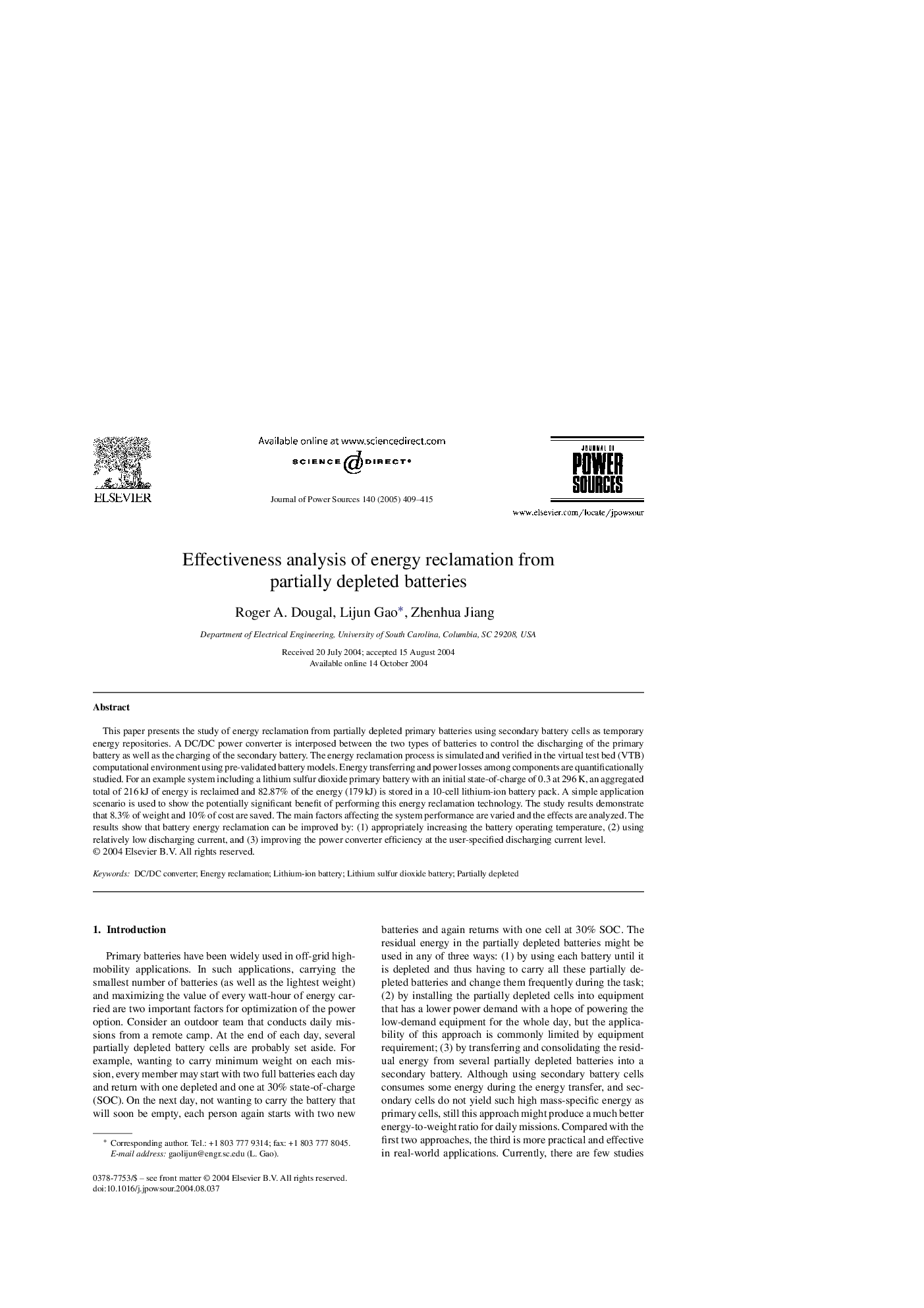| Article ID | Journal | Published Year | Pages | File Type |
|---|---|---|---|---|
| 9760486 | Journal of Power Sources | 2005 | 7 Pages |
Abstract
This paper presents the study of energy reclamation from partially depleted primary batteries using secondary battery cells as temporary energy repositories. A DC/DC power converter is interposed between the two types of batteries to control the discharging of the primary battery as well as the charging of the secondary battery. The energy reclamation process is simulated and verified in the virtual test bed (VTB) computational environment using pre-validated battery models. Energy transferring and power losses among components are quantificationally studied. For an example system including a lithium sulfur dioxide primary battery with an initial state-of-charge of 0.3 at 296Â K, an aggregated total of 216Â kJ of energy is reclaimed and 82.87% of the energy (179Â kJ) is stored in a 10-cell lithium-ion battery pack. A simple application scenario is used to show the potentially significant benefit of performing this energy reclamation technology. The study results demonstrate that 8.3% of weight and 10% of cost are saved. The main factors affecting the system performance are varied and the effects are analyzed. The results show that battery energy reclamation can be improved by: (1) appropriately increasing the battery operating temperature, (2) using relatively low discharging current, and (3) improving the power converter efficiency at the user-specified discharging current level.
Related Topics
Physical Sciences and Engineering
Chemistry
Electrochemistry
Authors
Roger A. Dougal, Lijun Gao, Zhenhua Jiang,
